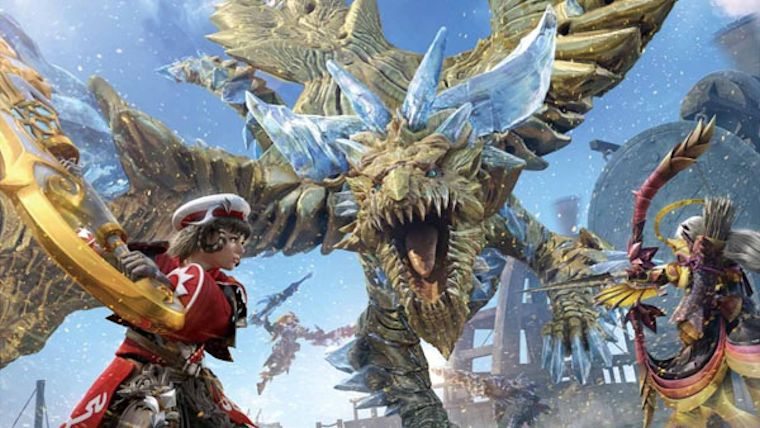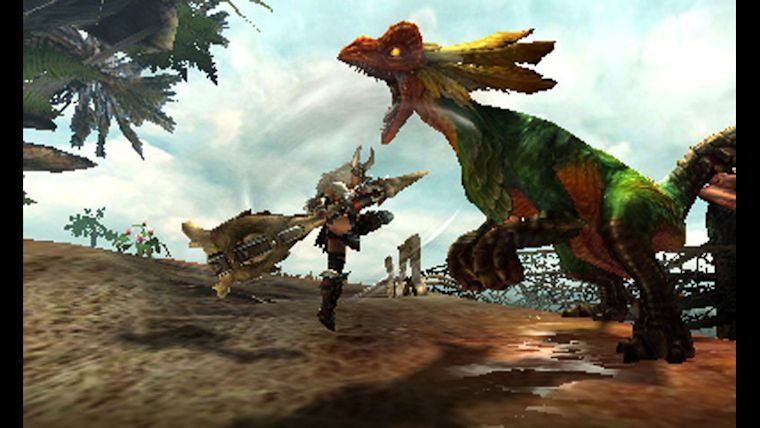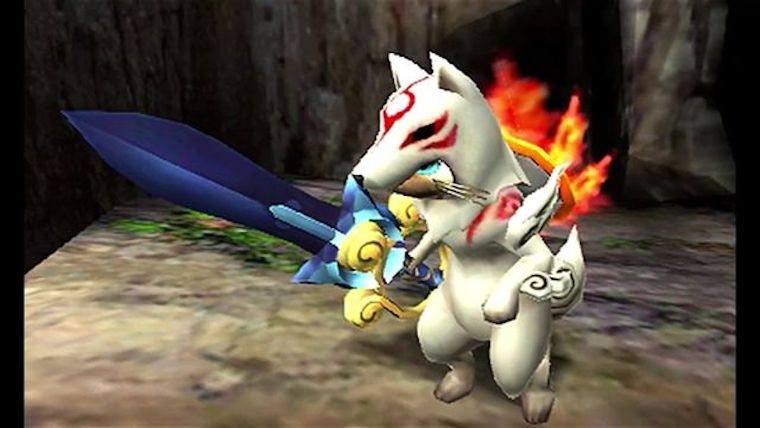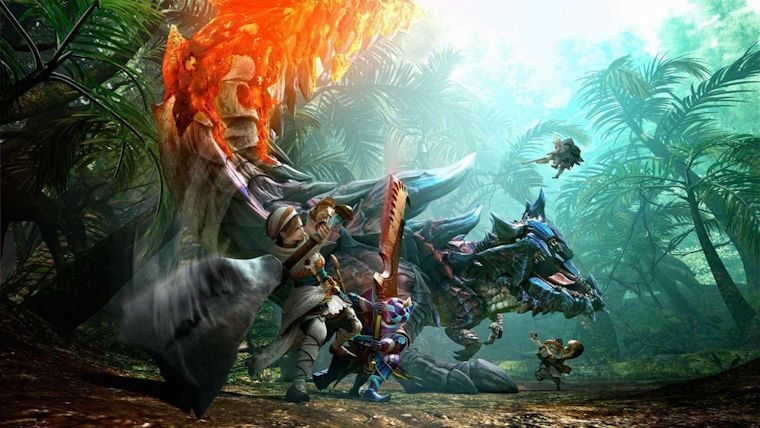The PlayStation 2 era is one of the most fondly remembered in gaming history for the number of franchises it spawned, with Monster Hunter being one of them. The series has always had a massive following in Japan, which has continued to grow steadily in the US behind successes like Monster Hunter 4 Ultimate. While Monster Hunter isn’t ready to make the jump to 5 quite yet, Capcom has combined the best elements of the franchise into one experience with Monster Hunter Generations.
As a series with as many entries as Monster Hunter, even with many not coming to the West, there have been plenty of different mechanics introduced over the years. Previous entries have always done a good job at building off of one another in both gameplay and content, which is no different in what really feels like an anniversary type game for Monster Hunter.
The series’ title is pretty self explanatory for newcomers to the series, as hunting for monsters continues to be the central element in the latest entry. Monster Hunter Generations starts off with a little exposition to get players started, but there is really little story to be found outside of the world itself. Instead, the game focuses on the combat and exploration, which you are introduced to very quickly. This pacing works very well for a game like this, as the majority of players that are picking it up likely have played the series before, while those new to the series have the in-game Hunter’s Notes that help to explain anything what hasn’t been revealed yet or what you may have missed.
Starting off in Monster Hunters Generations, the character is placed in the hub town of Bherna, which is new to the series. As you get further into the game, you can then visit other towns, which are actually returning from previous titles, as well as the new multiplayer based Hunters Hub. The games have had multiple villages before, but it’s neat to see the return of some classics in a game that is looking to capture the spirit of the entire franchise.

These hub areas could have been more distinguishable in what is located there, but they are mostly there to serve as a way to start quests in the game. As always, quests are ranked by stars, which increase in difficulty the higher the number of stars there are. The game can be a little confusing to start out, as there are training quests you can do, but the game defaults to the one star quests first, making it so you might not even notice the training ones.
The game offers three different ways to get quests, with the first simply being from a set quest giver in each of the towns, who let you pick between the training and starred quests. There are also NPCs within each of these towns that will be looking for your help throughout the game, though these are available gradually and not all at once. Lastly are the ones found in the Hunters Hub, which can technically be tackled solo, but are designed for up to four players to take on via either local or online multiplayer.
These different quests vary on what they require of you to complete them, with simpler ones having you slay a number of weaker monsters or collecting easy to find items. The tougher ones will have you hunting for a much larger beast and either slaying or trapping them, which will take a lot of patience on the player’s part. There are also some specialty missions, such as earning enough Wycademy Points, which can be done by collecting specific items and turning them in. Overall, these objectives are really not that different at all from prior entries, but they are exactly what any Monster Hunter fan will be expecting.
As with the rest of the series, you will have the option between a number of different weapons, 14 to be exact. These range from close combat weapons like a Sword & Shield or Lance to long distance weapons, such as the Bow, as well as plenty of in-between.While there are plenty of weapons to choose from, it is quite disappointing that they did not add any new weapons beyond the total we saw in Monster Hunter 4: Ultimate.
The pitfall that many games often suffer from is that they will offer an array of different weapons like this, but they aren’t all that different. However, Monster Hunter Generations continues the proud tradition of the series by giving players a variety of different weapons that all control differently, while still maintaining a fantastic balance. Choosing one particular weapon is not going to give you a major advantage over another, which allows you to really experience the game the way you choose, with you also having the ability to switch at most anytime in the game.

Previous Monster Hunter titles have had upgradeable weapons with branching paths of possible weapons, but Monster Hunter Generations switches up the formula with a new leveling system. The leveling system itself isn’t explained all that well in the game, but essentially you will start with one of each weapon as before, with the ability to purchase better versions of them. Regardless of the weapon you have, you can then choose to level it up at the Smithy, which will open up the ability to upgrade the weapon further, as well as continue to level it up.
The leveling system can get pretty complicated, as not only are you spending the in-game currency to level up each time, you need specific items to do so as well. This helps to promote the exploration aspect of the game, as not only are you going to be completing mission after mission, but you’ll need to be searching for specific items throughout the locales in the game so that you can improve your weaponry.
While the weapons themselves are the same, Monster Hunter Generations introduces two new mechanics known as Hunter Styles and Hunter Arts. At the very start of the game, players will choose between one of four Hunter Styles, Guild, Striker, Aerial, and Adept. Guild is essentially what veteran players will be used to, with Aerial and Adept being more centered around air attacks and counterattacks respectively, and Striker focusing on the Hunter Arts.
Hunter Arts are special moves that can be equipped on your character, with the number able to be chosen depending on your Hunter Style. Some of these are universal, but some are exclusive to one type of weapon class. This adds yet another reason to mess around with every weapon in the game, as they really can affect how one plays through the game. With 14 weapon types, four Hunter Styles, and even more Hunter Arts to get during the game, Monster Hunter Generations is full of options for you to try out.
These additions add an entirely new layer to the combat, but it is still hindered at times by the game’s poor targeting system. When searching for a large enemy to slay, you will find them on the bottom touch screen, which you can then target upon finding the sector in which they are in. However, any other smaller enemies cannot be targeted, making it very frustrating to slay them. The camera can get a little off as well, but New Nintendo 3DS owners will have the best control of this with the C Stick.

Returning players should also remember the feline creatures known as Palicoes from past entries, which could accompany you in battle. This is also the case once again, with the ability to buy weapons and equipment for them as well, including some classic Capcom series like Ghosts ‘n Goblins and Okami. Utilizing the Palicoes can really help a lot in battle, especially after they level up quite a bit. Monster Hunter Generations does not stop there though, as they actually have made Palicoes playable as well, which you can switch out with your character. There are even Palicoe exclusive missions known as Prowler quests, which can be chosen just as with other quests. These do not drastically alter the combat in the game, but it’s a nice little change of pace that fits right in with the series.
The Verdict
The Monster Hunter franchise continues to grow in popularity with each subsequent entry and Monster Hunter Generations should help elevate that even further. The game adds new features like the Hunter Styles and Arts, which complement the already existing foundation very well. While Capcom could have shaken up the formula further, they know exactly what fans enjoy and have given them that and more in Monster Hunter Generations.











Published: Jul 12, 2016 08:00 am